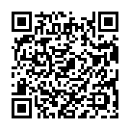-
- 加 LINE 客服
- ID: @editage

來電提醒:意得輯來電顯示為國際電話 +1 (669) 272-1214,此為台灣客服致電,請加入聯絡人安心接聽。
 同儕審閱被視為科學研究的支柱之一,經過同儕審閱程序而發表的論文通常被視為具有較高的品質,然而,這個過程也因為各種因素受到批評。前陣子,一些知名有同儕審閱程序的期刊如《斯普林格》(Springer)和《電氣和電子工程師協會》(Institute of Electrical and Electronic Engineers , IEEE)期刊撤銷了120篇假論文,引起學術界對於同儕審閱品質以及期刊是否真的在進行同儕審閱議題的討論。
同儕審閱被視為科學研究的支柱之一,經過同儕審閱程序而發表的論文通常被視為具有較高的品質,然而,這個過程也因為各種因素受到批評。前陣子,一些知名有同儕審閱程序的期刊如《斯普林格》(Springer)和《電氣和電子工程師協會》(Institute of Electrical and Electronic Engineers , IEEE)期刊撤銷了120篇假論文,引起學術界對於同儕審閱品質以及期刊是否真的在進行同儕審閱議題的討論。意得輯專為研究學者及各類學術單位提供英文編修以及期刊發表協助服務,我們在台灣、日本、美國、韓國、中國上海、新加坡和印度均設有辦事處,擁有世界上規模最大的編修團隊,為提供專業語言協助服務公司中的領導權威。